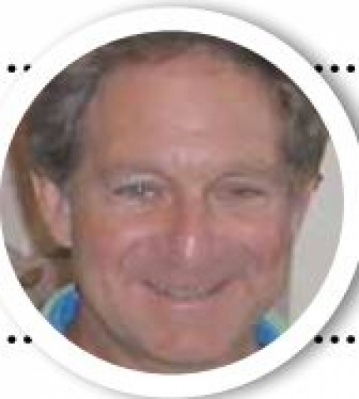
My dear friend Gary, who’s an acupuncturist and nature photographer, has chronic back pain. He can sometimes get relief from chiropractic treatment, acupuncture, and massage. Sometimes the pain, though, is so bad that he can’t stand up straight. One day he was merely preparing his house for a visit from a few dear friends from childhood, and the pain was so intense he had to lie down.
So some people are surprised to hear that he didn’t experience any back pain when he was recently on a very special photography vacation in the hills of Scotland, where every day there was significant hiking carrying his camera and tripod through rugged terrain to take exquisite photographs. Coincidence? Or was the fact that he was doing something he loves so much stronger than any back pain? Or better yet, doing the thing that he most loves put him so much in the flow of being on purpose that this spiritual fact was greater than his physical pain, and acted as a kind of holistic “medicine,” if you will, more than acupuncture, chiropractic, and massage?
The relationship between Dharma and medicine is worth pursuing. By Dharma, I’m referring to the performance of those activities that are most appropriate for a particular person. Taking pictures with a camera in the Scottish highlands is not my Dharma, but it is Gary’s. There’s much that we don’t know about the relationship between what a person does and how his health is. We do know, however, that an estimated 75-80 percent of disease is caused or complicated by stress. So we are well aware that health can be jeopardized when someone is out of the flow of things. And that there are jobs that people hate, but do to pay the mortgage, that are so harmful and toxic that they lead to heart disease and sometimes even death. But what about the other side of this equation? Can doing what is most right for you keep you healthy longer and even help you heal existing diseases?
A case in point close to home: I’ve been meditating since the age of 17 and teaching meditation since the age of 20. From the age of about four till the age of 16, I was getting weekly shots from my pediatrician for hay fever and rose fever symptoms. These maladies affected me so severely that I literally could not walk past a lawn that was being mowed. My reaction to freshly cut grass was so intense that I would need several packages of tissues to rub my terribly itchy eyes, and a bottle of Estivin to take the redness out of them. My nose also became terribly stuffed, so those tissues did double duty. To say that I was a mess was an understatement.
Things began to change when, at 17, I started Transcendental Meditation, a wonderful technique for creating deep relaxation. Shortly thereafter, my symptoms improved somewhat. Within nine months of starting the practice, I would say that symptoms had improved by a good 50 percent. Within two and a half years they had disappeared completely. I could have had a twohour picnic with my girlfriend while lawnmowers were working feverishly nearby without any trace of hay fever or rose fever.
How do we explain such a dramatic healing? Could it be that the practice of meditation, while certainly strengthening my immune system, might have contributed to the healing of these allergies? That would be the logical explanation by anyone who understands mind/ body medicine, who comprehends the relationship between stress and illness, between the relaxing of the nervous system and the reducing of nervousness in that system. Perhaps the itchy eyes and stuffed nose were a nervous reaction to the presence of ragweed and pollen in my environment.
But what about the possibility that, because meditation is my Dharma, doing it helped me heal these diseases? Maybe it was the connection to my Dharma that caused the healing. We might conclude, therefore, that living your Dharma can help you become healthier and free of certain illnesses. Perhaps it can even extend longevity. And since prosperity includes financial abundance and abundant well-being, we can see that doing your Dharma enhances your prosperity on both fronts.























